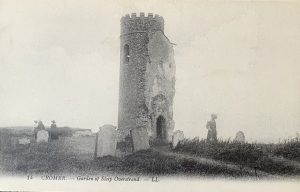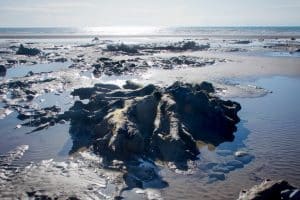I grew up on eroding cliffs on the Isle of Sheppey, at the mouth of the Thames. Along a 4-mile stretch between our house and Warden Point, the island has lost farms and cottages, pubs, a post office and at least one church.
On average the island’s cliffs lose some five feet a year, although after years of little change acres can be lost at once. Following a landslip in 1870, one farmer was was locally famous for having harvested his wheat some distance down the cliff.
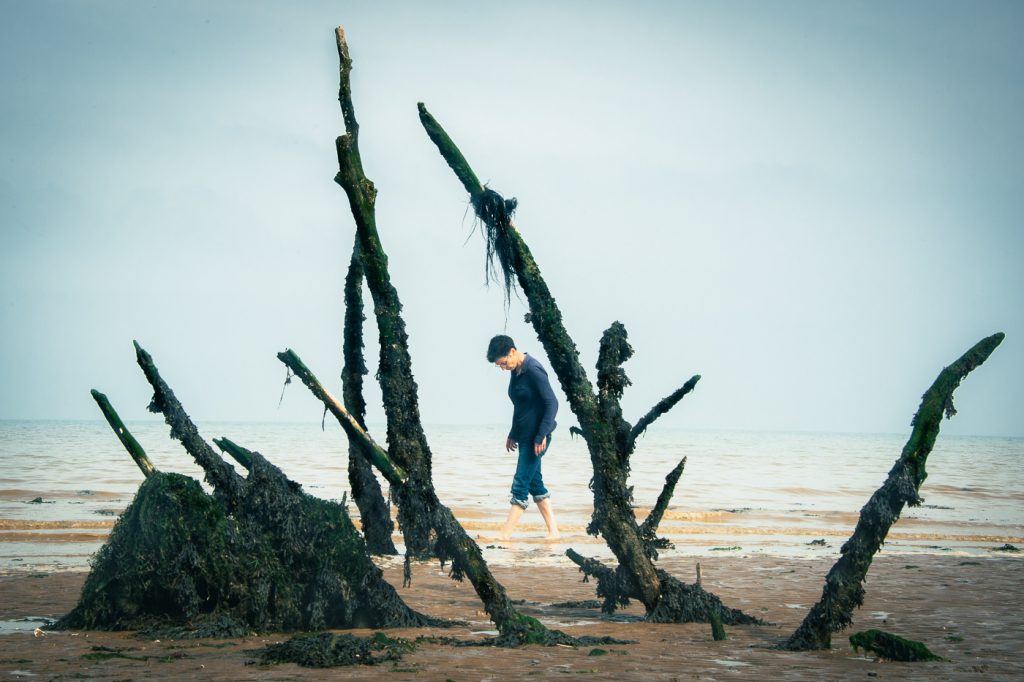
‘The whole mass of earth glided with slow descent down the cliff to the beach’ reported the London Illustrated News, ‘without even disturbing the surface of the ground’. In a subsequent landslide, another farmer found nine of his sheep grazing unhurt a hundred feet below the clifftop.
‘On a still night,’ my nan would say as she tucked me and my brother into bed, ‘if you stand out on the cliffs you can hear church bells toll beneath the sea’.
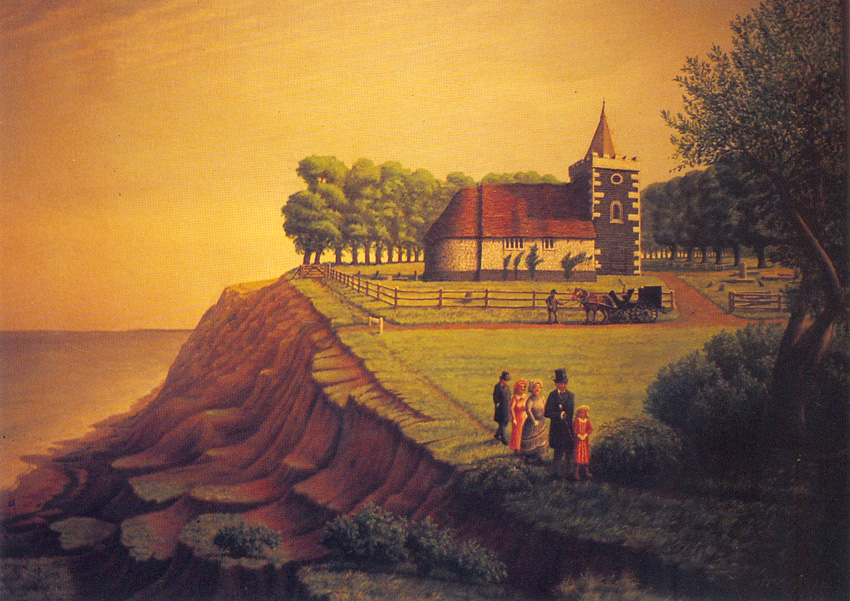
Based on an engraving made c. 1850s
The church that inspired the tradition had been lost a century earlier. In 1868, Warden Church stood derelict on the clifftop, with the pews and pulpit taken for firewood. The bell and rope, though, still hung in the tower, with complaints that ‘stray visitors amused themselves with ringing it’.
By 1887 the church had been dismantled, with the foundations and graveyard left to go over the edge. In 1899, a London Daily News reporter cycled out past the cottages at Mud Row and found children on the cliff ‘engaged in the gruesome and morbid occupation of digging out skeletons for “amusement”’.
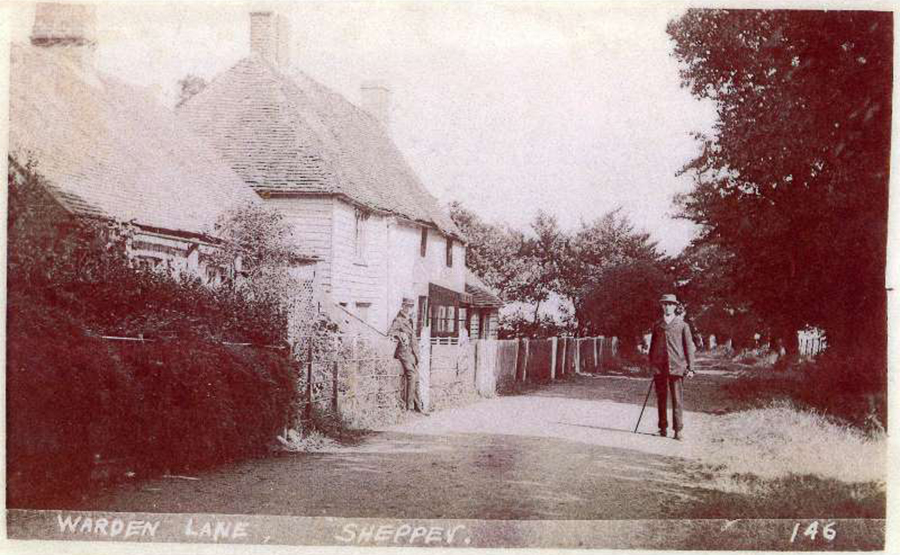
The road that led out to the church was Warden Lane. Through the early and mid 1900s, further landslips continued to shorten it (as they do today). The postcard below shows the same view as the one above, but with the cliff edge now clearly visible.

In 1971, another major landslip took the cottages and gardens in the postcards above.
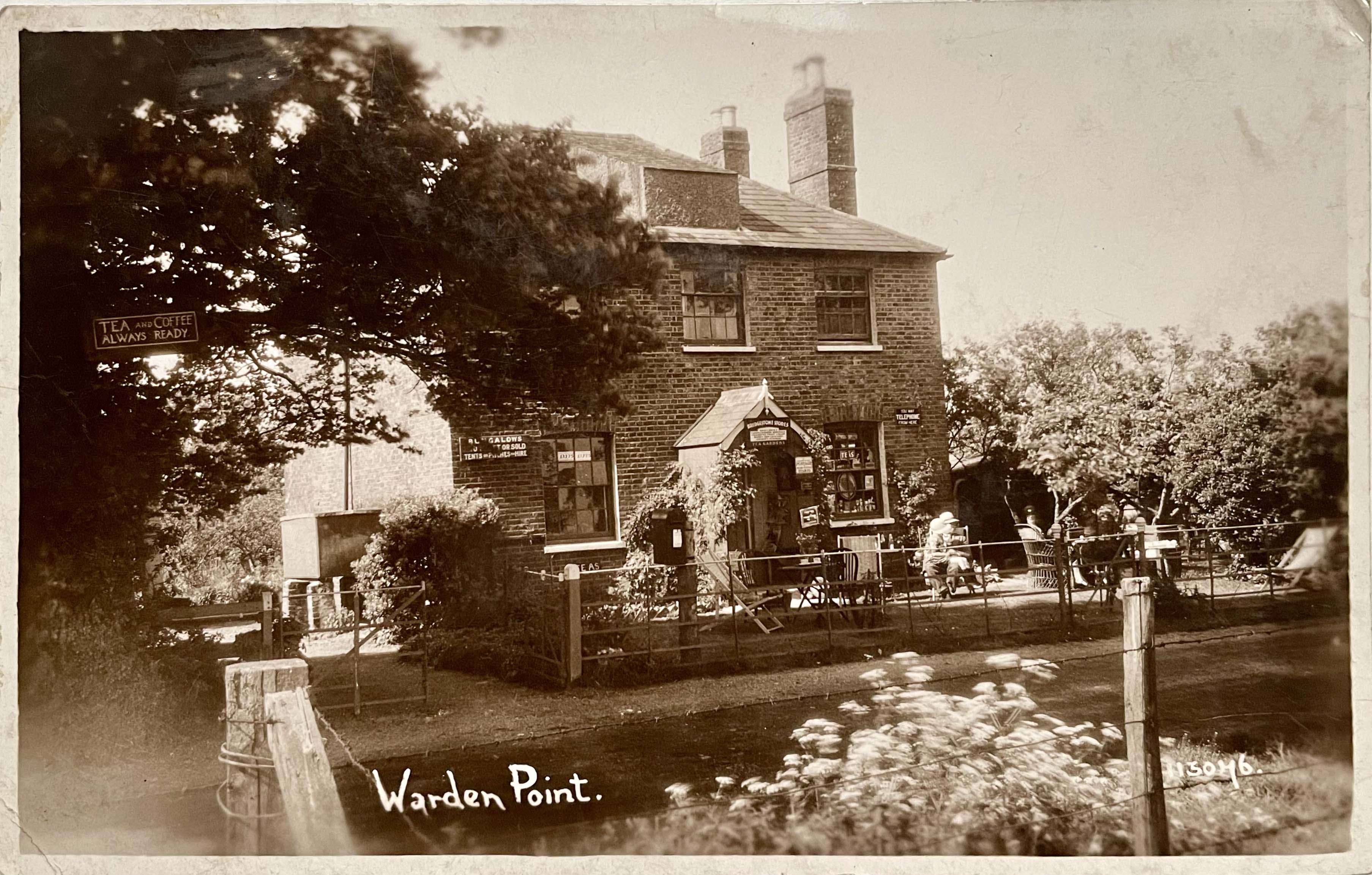
This left the village store and post office – previously the Smack Inn – sixty feet from the edge. Sid Smith and his wife, who’d only bought the place a month earlier, saw their walls crack and the floorboards open up.
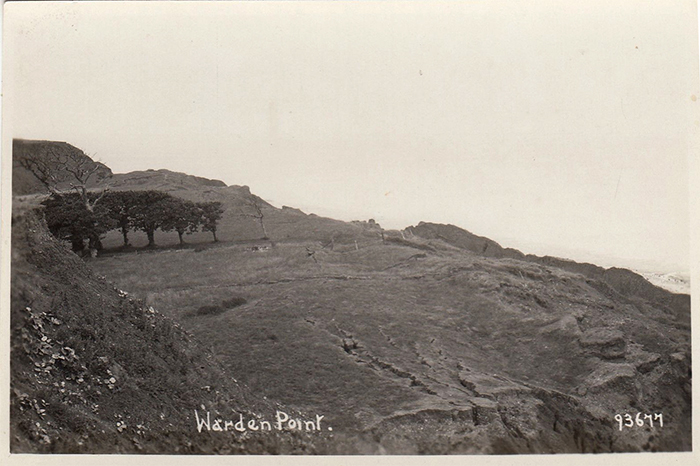
Left boarded up for years, then largely dismantled, the last of the old pub slipped quietly over the cliff in the 2010s.
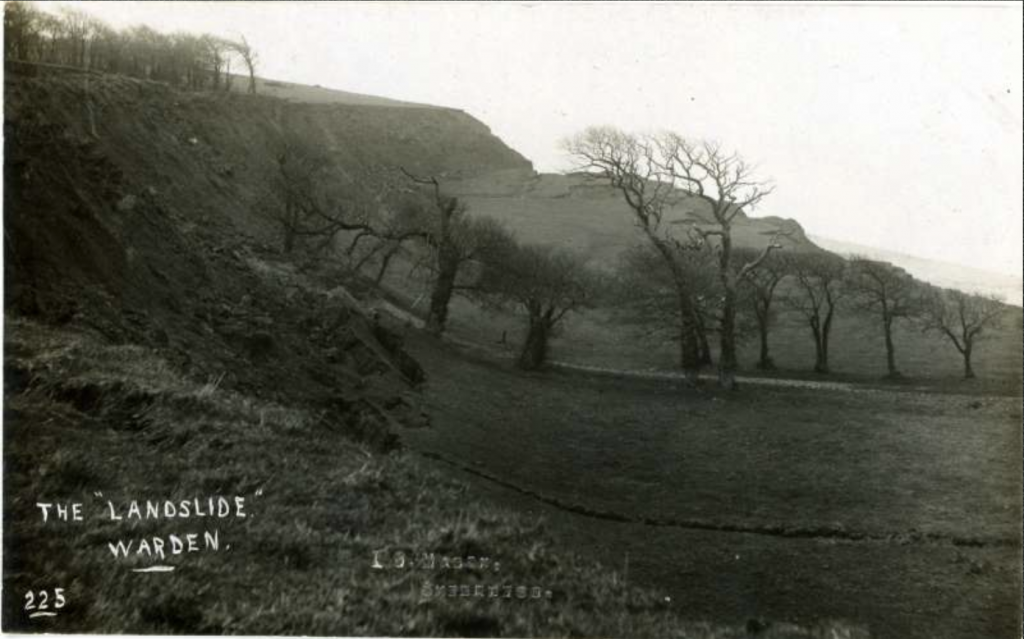
(see remnants on shore in the intitial photograph)
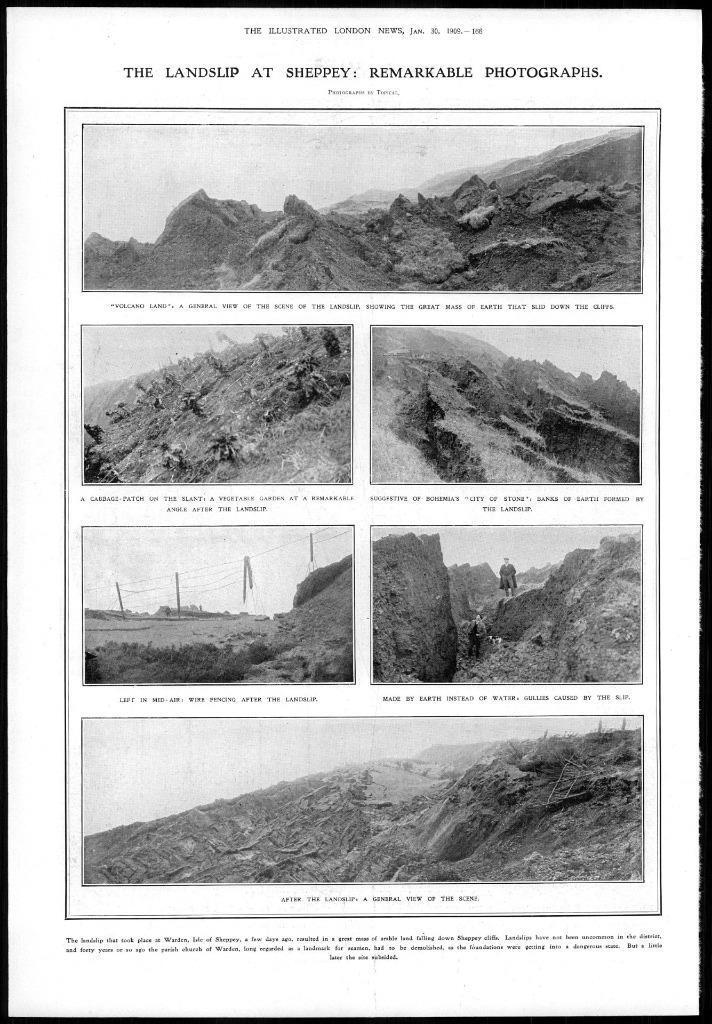
One photograph is captioned ‘A Cabbage Patch on the Slant: A Vegetable Garden at a Remarkable Angle’

